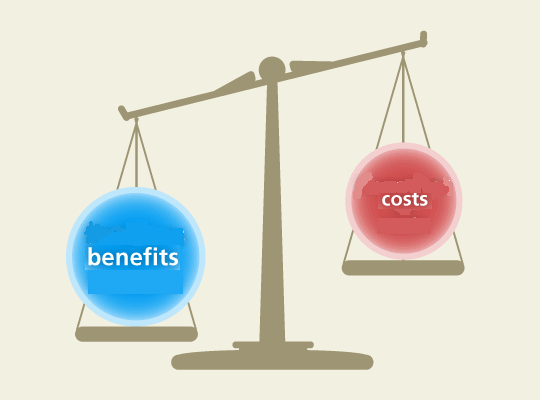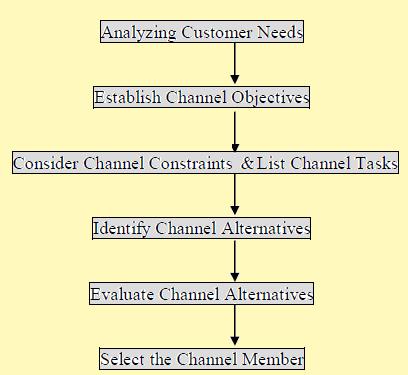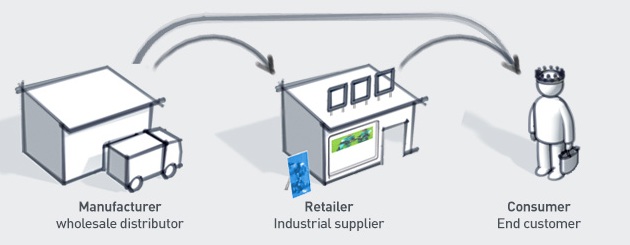To formulate an appropriate industrial pricing strategy it is very essential to have an analysis of the costs and benefits of the industrial product from the customer’s point of view. The benefits can be grouped into soft and hard benefits. Soft benefits includes those benefits which are very difficult to assess, such as customer training, warranty period, customer services, company reputation etc. Hard benefits are the physical attributes of the products such as production rate of machine, rejection rate of component and price/performance ratio. The costs for an industrial customer mean price plus other expenses that are incurred in purchasing and using the product. For example, the cost of a new oil refinery machine purchased by oil mill includes price, freight, installation, energy usage, repair and maintenance. The cost of production stoppage due to failure of machine may also be included while calculating the machine cost though it is difficult Continue reading
Industrial Marketing Management
Pricing of Industrial Products
The industrial marketers should understand the various aspects of the pricing, since pricing is the most critical part of industrial marketing strategy. Different strategies such as market segmentation strategy, product strategy, and promotion strategy are related to pricing strategy. In order to achieve the dual objective such as to meet the company objective and satisfy the market needs, the industrial marketer has to integrate the various strategies. When the members of buying committee of a buying firm, purchase a particular industrial product, they are buying a given level of technical service, product quality, and delivery reliability. The other elements such as the reputation of the supplier, friendship, a feeling of security and other personal benefits flowing from the buyer-seller relationship are also important. The bundle of attributes expecting by the buying committee are fall under three categories. (1) Product specific attributes (2) Company related attributes and (3) Sales personal related Continue reading
Marketing Logistics
Logistics is a military term that refers to the management of various activities like transportation, inventory, warehousing right from the stage of processing the raw materials by the manufacturer to convert it into finished goods till they are made available to the customer for use. While logistics management helps to optimize the flow of material within the organization, supply chain management crosses the boundaries of organization extending material flow integration upwards to suppliers and also descending down to customers. Logistics basically represents two primary product movements, (i) Physical supply, concerned with supply of raw materials, component parts, and other related supplies necessary for the manufacturing process. This comes under the purchase function (Materials Management) and (ii) Physical distribution, concerned with delivering the finished product to customers and the middlemen. This comes under the marketing management that is also called as Marketing Logistics. Marketing logistics is the process of delivering the Continue reading
Industrial Distribution Channel Management
Channel designing is resorted to by the industrial marketer when he has to develop either a new channel system or modify an existing one. As channel design and management is a difficult and an incessant task, an industrial marketer has to go through certain stages that are involved in designing a superlative channel system. The various steps that are involved in channel design process are analyzing needs of the customer, establishing channel objectives, considering channel constraints, listing channel tasks, identifying channel alternatives, evaluating alternate channels and selecting the intermediaries. The industrial marketer also has to take appropriate decisions on industrial distribution channel management by selecting the right intermediaries based on the various steps. The intermediaries need to be continuously motivated by means of offering them various benefits and facilities. Any conflicts arising between the intermediaries due to various reasons need to be solved by the industrial marketer. Finally, the entire Continue reading
Industrial Distribution Channel Design
It is very important that a distribution channel is properly aligned to satisfy the needs of channel members and also for the success of any industrial marketing strategy. A good industrial channel creates the communication and physical supply linkages with existing and potential customers. Channel designing in industrial markets is a dynamic process that consists of either developing the new channels or modifying the existing ones. Designing an appropriate industrial distribution channel and managing it is a tough and continuing task. A well designed channel structure helps to achieve the desired marketing objectives. A channel structure consists of types and number of middlemen, terms and conditions of channel members, number of channels. The various steps that are involved in industrial distribution channel design in industrial markets are given in the following figure. Let us understand each of the stages of industrial distribution channel design process in detail: 1. Analyzing the Continue reading
Industrial Distribution Channel
When a company or a manufacturer produces goods or services, it has the immediate responsibility to distribute and sell them to the industrial and institutional customers. The industrial customers generally constitute of wholesalers, retailers, manufacturers, educational institutions, governments, hospitals, public utilities, and other formal organizations. There are various intermediaries who are involved in a distribution and selling process helping the manufacturers to make their goods reach the end users. Thus, a network or channel that helps to flow the goods from the producer to the consumer through a set of interdependent organizations (intermediaries) is called distribution channel or trade channel or marketing channel. Channels are the tools used by management to move the goods from the place of production to the place of consumption. In the progression, the title of goods gets transferred from sellers to buyers. Industrial distribution is unique as there are several different methods of channeling the Continue reading



